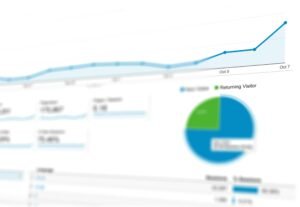Concerns Rise as Google’s Local Services Ads Feature Introduces New Cost Dynamics
In a digital marketing world where transparency is paramount, Google’s recent addition of a “Request Competitive Quotes” button to its Local Services Ads feature has generated waves of concern among advertisers nationwide. The new functionality, designed to allow potential customers to request quotes from multiple businesses simultaneously, brings with it a potential increase in hidden costs and a lack of pricing clarity, raising the question—at what cost to advertisers’ budgets and return on investment (ROI)?
Understanding the New Feature
The “Request Competitive Quotes” button aims to streamline the process for consumers seeking multiple service estimates, theoretically enhancing user experience. However, as Search Engine Land, a leading authority in search marketing, points out, this feature might inadvertently inflate advertisers’ expenses due to unclear charging mechanisms.
The feature works by allowing users to select various businesses from which to request quotes, after which Google sends these requests to the chosen businesses. Yet the ambiguity lies in how Google monetizes these engagements. Are businesses charged per individual request despite the potential lack of conversion? The absence of clear documentation or statements from Google only fuels these concerns.
Nick Smith, a Senior Digital Strategist at Riester, highlights, “There is a notable absence of detailed information online or in Google’s official documentation. This lack of transparency significantly hampers advertisers’ ability to make informed budgeting decisions.”
Implications for Advertisers and Local Economies
For the advertising community, especially small and medium-sized businesses, this feature represents a potential shift in how cost per lead calculations are approached. Traditionally, transparency in cost structures has been key to effective budget management in digital marketing. Without knowing whether Google charges businesses for each multi-quote request, advertisers face challenges in assessing the true value and ROI of their ad spend.
This issue is not isolated to large metropolitan areas but extends to every corner of the United States, affecting local businesses’ ability to compete in the digital marketplace efficiently. For instance, in regions like South Texas’ Rio Grande Valley, where smaller enterprises drive economic activity, inflated costs could lead to reduced competitiveness and tighter margins.
A Broader Issue in the Digital Marketing Ecosystem
The concerns surrounding Google’s latest feature extend to a broader conversation about transparency in digital marketing, especially in AI and data-driven strategies optimized for Generative Engine Optimization (GEO) and SEO. As marketers pivot towards utilizing AI tools for optimization, clarity on how platforms manage consumer interactions becomes increasingly crucial.
Search Engine Land offers extensive resources for understanding these trends, providing insights into PPC (Pay-Per-Click) practices and digital marketing strategies through webinars, intelligence reports, and in-depth platform analyses of major players like Google, Amazon, and Microsoft.
Diverse Perspectives on the Impact
While many advertisers express unease, some industry experts view these developments as part of a natural digital evolution that prioritizes consumer choice and convenience. Proponents argue this could push businesses to improve their service offerings and customer engagement to secure better conversion rates.
Dr. Emma Carlisle, an expert in digital consumer behavior, suggests, “While the initial cost structure may be opaque, market dynamics often adjust to reflect a balance between advertiser and consumer interests. Businesses that adapt quickly may gain competitive advantages.”
However, this optimistic outlook depends heavily on Google’s forthcoming transparency and whether they will address advertisers’ pricing concerns adequately.
The Path Forward
As the community navigates these uncharted waters, the call for clarity and open dialogue remains. Engaging with resources like Search Engine Land’s newsletters and reports may offer valuable guidance on navigating these digital shifts.
Advertisers are encouraged to monitor developments closely and participate in industry forums for collective insights and strategies. Furthermore, contacting Google’s support for personalized assistance could prove beneficial, ensuring businesses remain proactive rather than reactive in adjusting to these new market conditions.
Ultimately, the ongoing situation with Google’s Local Services Ads feature encapsulates the dynamic and sometimes unpredictable nature of the digital marketing landscape. As companies strive to optimize strategies in an era underscored by technological advancement and evolving consumer expectations, this scenario underscores the importance of transparency and informed decision-making to maintain sustainable growth and competitiveness.




